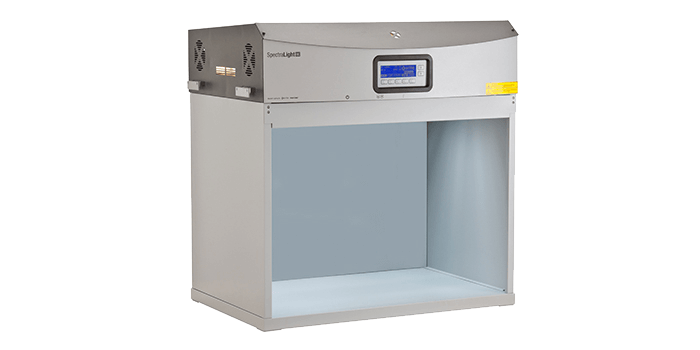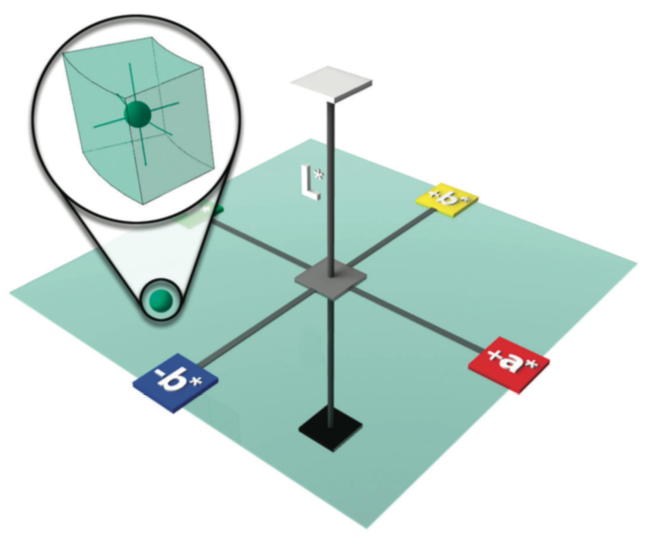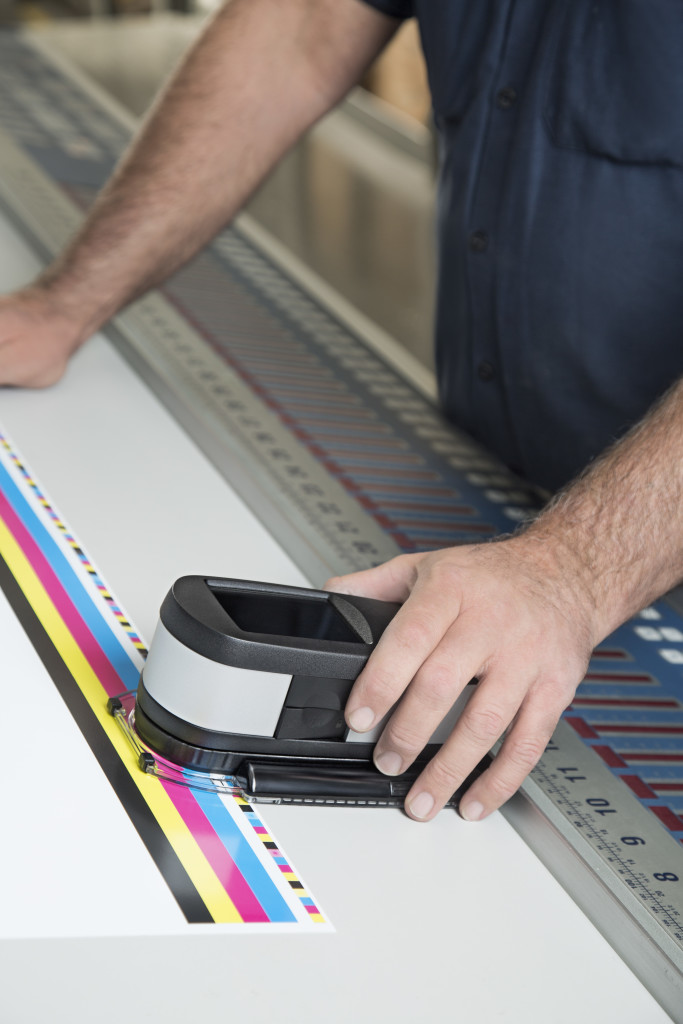A densidade só nos diz uma coisa sobre uma cor – quão clara ou escura ela é. Para comparar e comunicar cores precisas na impressão e embalagem, você também precisa medir matiz e saturação.
Hoje vamos dar uma olhada nos dois modelos de cores mais usados: CIELAB e L*C*h°, e os métodos de tolerância que nos ajudam a descrever a diferença de cores.
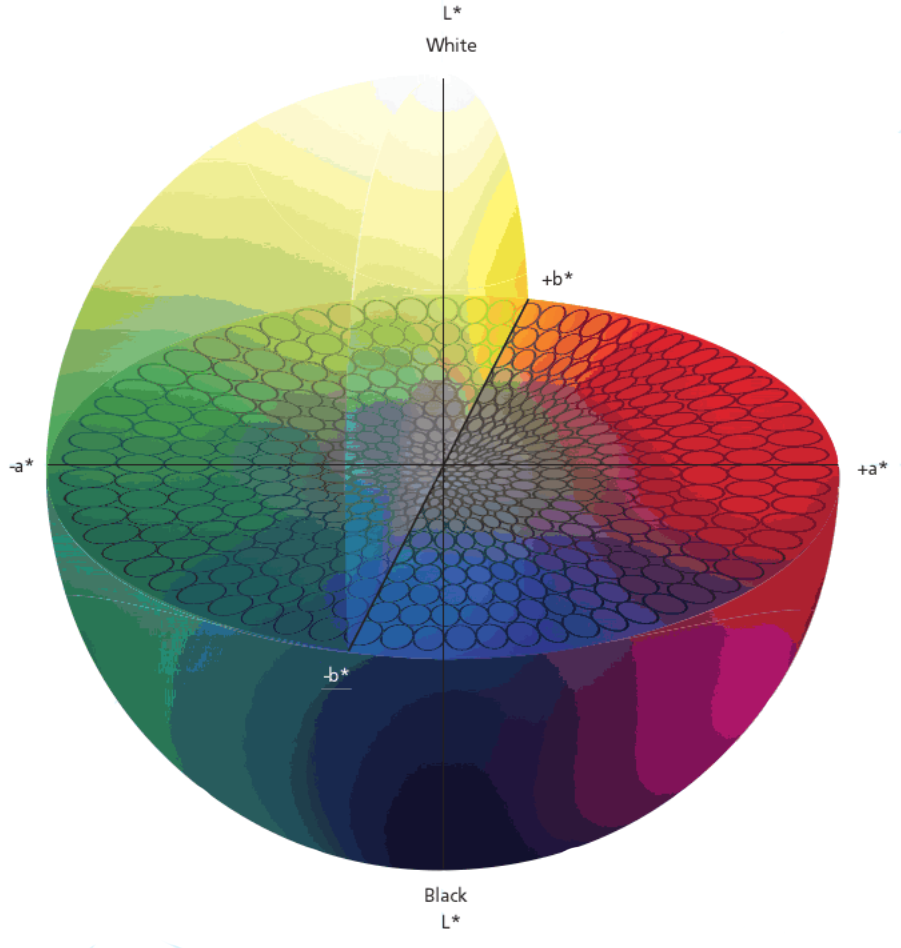
O conceito por trás do CIELAB e L*C*h° é semelhante à longitude, latitude e altitude... com três coordenadas, você pode descrever a localização exata de qualquer lugar em nosso planeta (ou, neste caso, qualquer cor no espaço de cores).
CIELAB
CIELAB é um modelo que navega através de um espaço de cores em forma de grade contendo todas as cores que podemos ver. A maneira correta de pronunciá-lo é "see-lab", ou "L-star, a-star, b-star", mas alguns aplicativos e aparelhos simplesmente chamam de L, A, B ou Lab.
O modelo de cor CIELAB possui um eixo L vertical que representa luminosidade. Ele se move de branco no topo para preto na parte inferior. Cores mais claras têm valores mais altos, e cores mais escuras têm valores mais baixos. Olhando de cima, você pode ver os eixos horizontais A e B. Os vermelhos caem no A positivo, e os verdes em A negativo são positivos B e azuis são negativos B. Usando números para L, A e B, a localização de uma cor pode ser especificada dentro deste espaço tridimensional.

Este ciano tem valor L*a*b* de 42,65, -25,29, -28,16. Ele pode ser localizado no CIELAB movendo-se até o eixo L para 42,65, em seguida, na direção negativa no eixo A para -25,29, em seguida, na direção negativa no eixo B para -28,16.
L*C*h°
No modelo de cor L*C*h°, L para significa luminosidade, C para croma e H para matiz. Assim como CIELAB, quanto mais clara a cor, maior o valor. Hue descreve a família de cores – vermelho, amarelo, verde e azul – e todas as cores que caem no meio. Os números em um círculo de matiz variam de zero a 360, começando com vermelho a zero graus, em seguida, movendo-se no sentido anti-horário através de amarelo, verde, azul, em seguida, de volta para o vermelho.
Croma, ou saturação, descreve onde uma cor cai entre o centro e a borda da esfera. Os números mais baixos perto do centro são mais cinzentos e têm muito pouco croma, enquanto os números mais altos são mais puros e saturados.
Ambos os modelos podem ser usados para descrever a mesma cor. O modelo de cor L*C*h° é mais intuitivo, mas a maioria das especificações exigem medições no CIELAB.
Tolerância
Para controlar a cor, você precisa ser capaz de identificar pequenas diferenças, ou variações, na sua reprodução de cores. Definir uma tolerância significa escolher o limite de quanta diferença é aceitável entre uma cor alvo e seus valores de produção. As impressoras frequentemente seguem as tolerâncias que a ISO estabeleceu para cores de tinta sólidas. Alternativamente, clientes podem fornecer tolerâncias, especialmente para logotipo e cores spot.
Ao comparar dois valores de cor no CIELAB ou L*C*h°, a diferença é descrita como um delta. Uma equação matemática é usada para encontrar a diferença entre duas cores usando os três valores: L*, a* e b*, ou L*, C* e h°. Isso é chamado delta E (também escrito DE ou ∆E). Um delta E de 1.0 é geralmente aceito como a menor diferença de cor que o olho humano pode ver.
A tolerância que você escolhe depende do processo de produção. O trabalho crítico de cores, como logotipos da empresa, terá uma tolerância mais apertada, enquanto um design gráfico em um outdoor de rodovia provavelmente permitirá mais espaço para erros. Às vezes, as especificações de impressão de um cliente estipulam a diferença aceitável na luminosidade de uma cor, e limitam a diferença de vermelho para verde e amarelo para azul. Em outras palavras, eles podem especificar um ∆L*, um ∆C*, e ∆h°, ou um ∆L*, ∆a*, ∆b*.
Você também precisa considerar a repetibilidade da impressora ao definir a tolerância... Não pode ser menor do que a variação que sua impressora normalmente consegue através de uma corrida de impressora.
Delta E entrou em jogo em 1976. Desde então, percebemos que o olho humano pode ver algumas cores melhor do que outras. Por exemplo, se adicionarmos apenas uma pequena quantidade de azul ao cinza claro, podemos ver uma pequena mudança na cor. Mas se adicionarmos a mesma quantidade de azul a um roxo muito cromático, nem notamos a mudança.
Outras fórmulas de tolerância que levam isso em consideração foram desenvolvidas. CMC, CIE94 e CIE2000 tentam compensar as fraquezas do CIELAB. A matemática é mais complicada, então não vamos entrar nisso aqui, mas o ponto é que todos dão resultados diferentes que se assemelham mais à maneira como realmente vemos diferenças de cores.
Escolhendo a melhor fórmula de tolerância para suas necessidades
Se você estiver correspondendo a uma especificação ou padrão, use o delta E especificado no padrão.
Se seu cliente especificar uma cor alvo e exigir uma certa combinação delta E, pergunte qual fórmula para que você possa usá-la. Se você não selecionar a correta, você pode falhar em algum trabalho que deve ser aprovado, ou seu cliente pode rejeitar o trabalho que você mediu como aceitável.
Se você quiser saber mais sobre teoria das cores, confira nosso curso online Teoria de Cores: Os Números da Cor.
Soluções de gerenciamento de cores em destaque
Saiba mais sobre esses produtos em destaque:
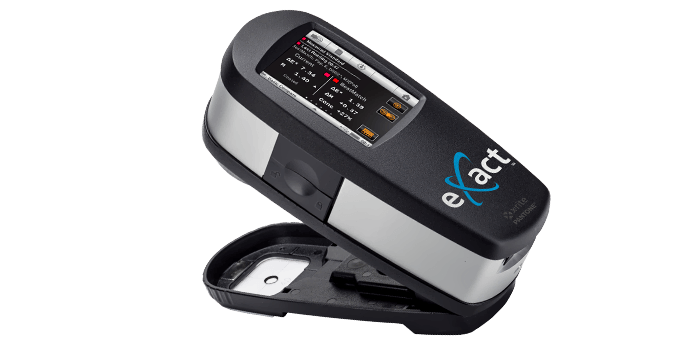
eXact
O novo eXact combina funcionalidade líder do setor com uma interface fácil de usar para oferecer a melhor solução ainda para controlar, gerenciar e comunicar cores em todo o fluxo de trabalho de cores.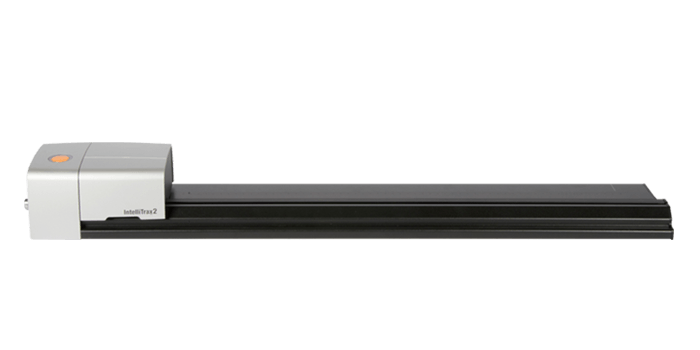
IntelliTrax2
Escaneie a barra de cores em uma folha de prensa típica em menos de 10 segundos. IntelliTrax2 é a solução ideal de gerenciamento de cores para operações de impressão/conversão de alta velocidade.